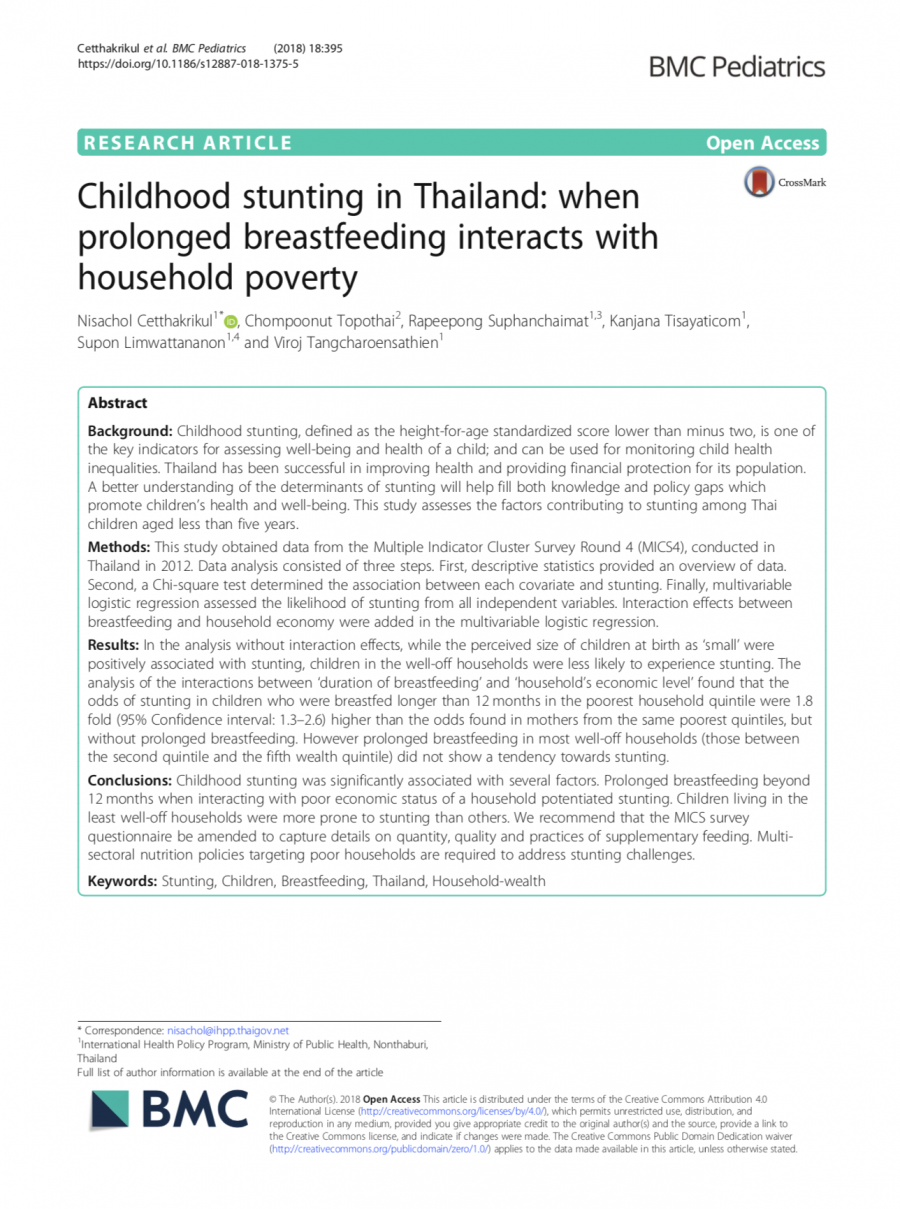Title: Childhood stunting in Thailand: when prolonged breastfeeding interacts with household poverty
Authors: Nisachol Cetthakrikul, Chompoonut Topothai, Rapeepong Suphanchaimat, Kanjana Tisayaticom, Supon Limwattananon and Viroj Tangcharoensathien
Issue Date: 2018
Publisher: BioMed Central Ltd
Abstract
Background: Childhood stunting, defined as the height-for-age standardized score lower than minus two, is one of the key indicators for assessing well-being and health of a child; and can be used for monitoring child health inequalities. Thailand has been successful in improving health and providing financial protection for its population. A better understanding of the determinants of stunting will help fill both knowledge and policy gaps which promote children’s health and well-being. This study assesses the factors contributing to stunting among Thai children aged less than five years. Methods: This study obtained data from the Multiple Indicator Cluster Survey Round 4 (MICS4), conducted in Thailand in 2012. Data analysis consisted of three steps. First, descriptive statistics provided an overview of data. Second, a Chi-square test determined the association between each covariate and stunting. Finally, multivariable logistic regression assessed the likelihood of stunting from all independent variables. Interaction effects between breastfeeding and household economy were added in the multivariable logistic regression. Results: In the analysis without interaction effects, while the perceived size of children at birth as ‘small’ were positively associated with stunting, children in the well-off households were less likely to experience stunting. The analysis of the interactions between ‘duration of breastfeeding’ and ‘household’s economic level’ found that the odds of stunting in children who were breastfed longer than 12 months in the poorest household quintile were 1.8-fold (95% Confidence interval: 1.3–2.6) higher than the odds found in mothers from the same poorest quintiles, but without prolonged breastfeeding. However prolonged breastfeeding in most well-off households (those between the second quintile and the fifth wealth quintile) did not show a tendency towards stunting. Conclusions: Childhood stunting was significantly associated with several factors. Prolonged breastfeeding beyond 12 months when interacting with poor economic status of a household potentiated stunting. Children living in the least well-off households were more prone to stunting than others. We recommend that the MICS survey questionnaire be amended to capture details on quantity, quality and practices of supplementary feeding. Multi-sectoral nutrition policies targeting poor households are required to address stunting challenges.
Related Works:
Declaration of nutrition information on and nutritional quality of Thai ready-to-eat packaged food p...
A Review of methods and tools to assess the implementation of government policies to create healthy ...
Level of implementation of best practice policies for creating healthy food environments
Unhealthy food and non-alcoholic beverage advertising on children's, youth and family free-to-air an...
Corporate political activity of major food companies in Thailand: an assessment and policy recommend...
Assessment of the stated policies of prominent food companies related to obesity and non-communicabl...

